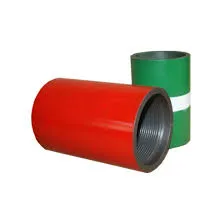- Afrikaans
- Albanian
- Amharic
- Arabic
- Armenian
- Azerbaijani
- Basque
- Belarusian
- Bengali
- Bosnian
- Bulgarian
- Catalan
- Cebuano
- Corsican
- Croatian
- Czech
- Danish
- Dutch
- English
- Esperanto
- Estonian
- Finnish
- French
- Frisian
- Galician
- Georgian
- German
- Greek
- Gujarati
- Haitian Creole
- hausa
- hawaiian
- Hebrew
- Hindi
- Miao
- Hungarian
- Icelandic
- igbo
- Indonesian
- irish
- Italian
- Japanese
- Javanese
- Kannada
- kazakh
- Khmer
- Rwandese
- Korean
- Kurdish
- Kyrgyz
- Lao
- Latin
- Latvian
- Lithuanian
- Luxembourgish
- Macedonian
- Malgashi
- Malay
- Malayalam
- Maltese
- Maori
- Marathi
- Mongolian
- Myanmar
- Nepali
- Norwegian
- Norwegian
- Occitan
- Pashto
- Persian
- Polish
- Portuguese
- Punjabi
- Romanian
- Russian
- Samoan
- Scottish Gaelic
- Serbian
- Sesotho
- Shona
- Sindhi
- Sinhala
- Slovak
- Slovenian
- Somali
- Spanish
- Sundanese
- Swahili
- Swedish
- Tagalog
- Tajik
- Tamil
- Tatar
- Telugu
- Thai
- Turkish
- Turkmen
- Ukrainian
- Urdu
- Uighur
- Uzbek
- Vietnamese
- Welsh
- Bantu
- Yiddish
- Yoruba
- Zulu
Exploring the Features and Benefits of J55 Coupling in Oil and Gas Applications
Understanding J55 Couplings Essential Components in Oil and Gas Industry
In the oil and gas industry, the importance of reliable and efficient equipment cannot be overstated. Among these vital components, J55 couplings play a crucial role in ensuring the integrity and stability of drilling operations. Understanding their features, applications, and advantages is essential for professionals in the field.
What is J55 Coupling?
J55 coupling refers to a specific grade of coupling used in the context of oil and gas extraction. The J designation typically indicates the American Petroleum Institute (API) specification, which sets standards for various steel grades used in pipelines and casing. J55 is a high-strength steel that is commonly used due to its favorable combination of strength, toughness, and weldability. These properties make J55 couplings particularly suitable for environments characterized by high pressure and temperature, which are commonplace in oil and gas operations.
Features of J55 Couplings
J55 couplings are known for their durable construction and reliability. They are manufactured from high-quality corrosion-resistant steel, ensuring longevity even in harsh environments. The couplings are typically designed with a threaded connection, which allows for easy assembly and disassembly. This feature is particularly advantageous during maintenance or when modifications to the pipeline are required.
Furthermore, J55 couplings are available in various sizes, making them versatile for various applications. They can accommodate different diameters of pipes, enabling seamless integration in diverse drilling environments. Overall, the structural integrity and design precision of J55 couplings contribute to their widespread use in the industry.
Applications in Oil and Gas Industry
j55 coupling

The primary application of J55 couplings is in well casing and tubing installations. They are an essential part of the drilling assembly, connecting sections of pipe to transport oil or gas from the well to the surface. J55 couplings are particularly beneficial in situations where the drilling depth exceeds typical standards, as they can withstand the immense pressure and stress encountered at these depths.
In addition to oil and gas extraction, J55 couplings find application in geothermal drilling and water well drilling. Their reliability and strength make them ideal for any operation requiring consistent pipeline performance under extreme conditions. This adaptability to various drilling applications underscores their importance in resource extraction industries.
Advantages of Using J55 Couplings
The use of J55 couplings in the drilling industry comes with several advantages. First and foremost is their strength and durability; they are designed to endure the rigors of high-pressure environments, minimizing the risk of failure during operations. This reliability is critical in minimizing downtime and reducing safety hazards associated with leaks or ruptures.
Additionally, the ease of installation and maintenance of J55 couplings save both time and labor costs. The threaded design allows technicians to quickly connect or disconnect sections of pipe, streamlining the maintenance process. Moreover, the corrosion-resistant nature of J55 steel ensures that the couplings maintain their integrity over time, reducing the need for frequent replacements.
Conclusion
In summary, J55 couplings represent a vital component in the oil and gas industry's drilling operations. Their robust construction, versatility, and ease of use make them indispensable for ensuring the safe and effective transportation of resources. As the industry continues to evolve, the importance of such high-quality components will only increase, solidifying the role of J55 couplings in future drilling technologies.
-
Well Casing Extension Couplings – Applications and InstallationNewsJun.06,2025
-
Types of Crossover Subs in Drilling & CompletionNewsJun.06,2025
-
Key Features of High-Quality Tubing Pup JointsNewsJun.06,2025
-
Installation and Maintenance Tips for Steel Couplings for PipeNewsJun.06,2025
-
How to Select the Right Pup Joint for Oil & Gas OperationsNewsJun.06,2025
-
Applications of Stainless Steel Pipe CouplingsNewsJun.06,2025







